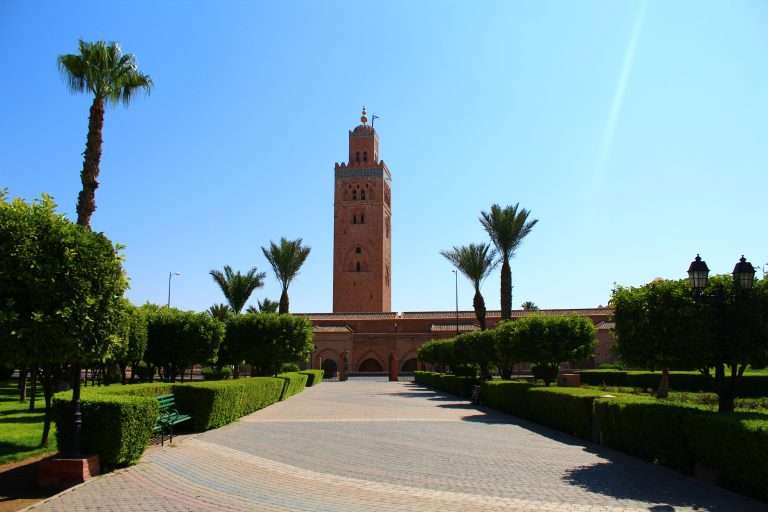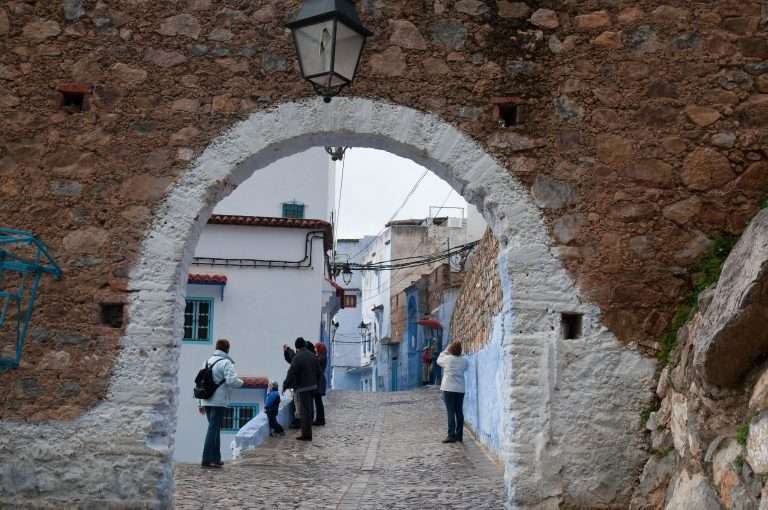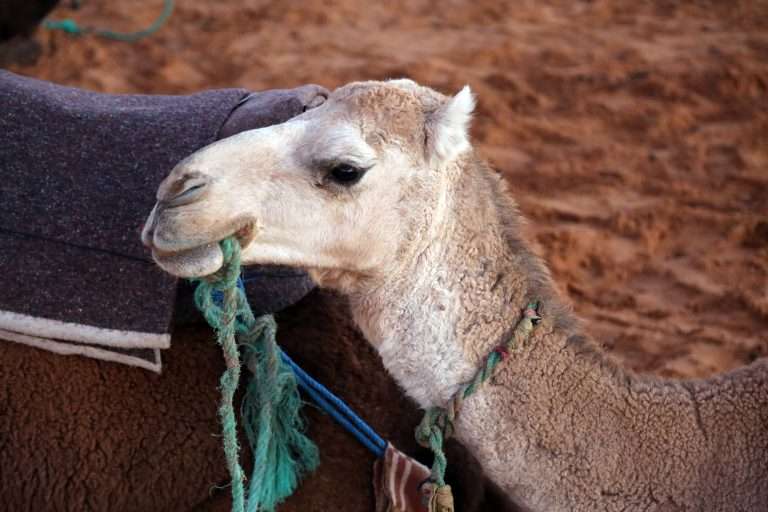Morocco is a truly unique country, renowned for its captivating landmarks and rich cultural heritage. Situated at the crossroads of Islamic and European cultures, this extraordinary nation is home to ancient Arab and Berber tribes. Spanning from the vast Sahara Desert, the largest desert in the world, to the lush green mountains of Africa, Morocco offers a diverse range of attractions.
Explore the stunning beaches along the Atlantic coast and marvel at the rugged cliffs of the Mediterranean coast. Discover the snow-capped peaks of the High Atlas Mountains, surrounded by magnificent cedar forests and evergreen oak forests.
Immerse yourself in the beauty of picturesque river gorges and behold the countless cultural monuments that dot the landscape. Experience the centuries-old traditions of the local people and acquire magnificent souvenirs crafted by skilled local artisans. Morocco is a treasure trove of landmarks, offering a truly unforgettable journey through its remarkable landscapes and enchanting cultural sites.
Marrakech Landmarks

Marrakech, the vibrant and dramatic city of Morocco, is renowned for its captivating landmarks. This cosmopolitan center has been influenced by various cultures, including Berber, Andalusian Arab, African, and European. Its allure lies in the vivid and exotic light, the enchanting aroma of spices, and the hidden secrets of its history. Marrakech’s relaxed and cosmopolitan soul, with its abundance of simple yet sensual experiences, makes it one of the most fascinating cities and sought-after landmarks in Morocco.
Explore Marrakech and indulge in its gastronomic delights, where exotic spices tantalize the taste buds. Immerse yourself in the refreshing music, witness the eccentricity of ethnic trades, and marvel at the opulent gardens and stunning architecture.
No other city in Africa offers the unique experience of navigating a centuries-old mercantile medina, traversing winding alleys and donkey-laden passages, only to find oneself in a modern lounge-restaurant, where the buzz of foreign markets intertwines with the beats of contemporary DJs.
Among the notable landmarks in Marrakech is the Koutoubia Mosque, a 12th-century marvel with a 69-meter-high minaret, making it one of the oldest mosques in Morocco. The mosque stretches across an impressive area of 90 meters in width and 60 meters in length.
Other captivating sites include the Madrasa Ibn Yussef, the Saadian Tombs, the ruins of the Badi Palace, the Royal and Bahia Palaces, the Menara Gardens, the Majorelle Garden, and the iconic Djemâa el Fna square, the renowned heart of Marrakech. In recognition of its cultural significance, the old town, along with the Agdal Gardens and the Menara Gardens, was declared a UNESCO World Heritage Site in 1985. In Marrakech, every corner holds a landmark waiting to be discovered, providing a truly memorable experience of Morocco’s rich heritage.
Best Tours To Discover Marrakech Landmarks
Fes Landmarks

Fes, classified as a UNESCO World Heritage site, boasts a rich heritage with its winding Medina, numerous monuments, and unique culture. This city, aptly described by Paul Bowles as “an enchanted labyrinth protected from time,” holds a special place among the world’s landmarks.
The Medina of Fes is the largest medieval Medina in the Maghreb, retaining its original design since the 12th century. It stands as a testament to a civilization that once championed tolerance and commerce, making it a historical center of knowledge in North Africa.
Fes is a city adorned with lush gardens that were once nourished by the famous “20 thousand fountains.” Its palaces are intricately ornamented, mosques are adorned with exquisite detail, and the Madrasas showcase fine decorations. Exploring the mysterious alleys is like stepping into a sublime and dreamlike world. Here, different generations come together to share stories of heroism and immerse themselves in a unique atmosphere, earning Fes the nickname of “the most imperial of imperial cities.”
Visiting Fes means discovering the remarkable landmarks that have shaped its history and culture. From the Medina’s intricate streets to the splendid mosques and Madrasas, Fes offers a captivating journey through time and a deep appreciation for Morocco’s heritage.
Best Tours To Discover Fes Landmarks
Chefchaouen Landmarks

Nestled on the slopes of the Rif Mountains, the blue city of Chefchaouen is a truly unique landmark in Morocco. This small town offers a respite from the traditional variegation of Moroccan houses, captivating visitors with its heavenly shades of blue. It exudes a tranquil ambience, resembling both a European city and a serene hamlet.
The tradition of painting houses in Chefchaouen dates back to the 15th century when Jews sought refuge from persecution in Morocco. Although the Jewish community didn’t stay in the city for long, they left an indelible mark by painting the buildings in their sacred color, blue. Over time, this tradition took root, turning Chefchaouen into a distinct and recognizable town.
The well-preserved medina of Chefchaouen, with its winding streets, is a true jewel among the Andalusian Arab cities of northern Morocco. To fully appreciate the town’s beauty, one must ascend the nearby Rif mountain and witness the breathtaking transition of colors from blue to turquoise. From the eastern street of the old town to the hilltop path, exploring Chefchaouen offers a glimpse into its glory and the captivating landmarks it holds.
Essaouira Landmarks

Nestled on the slopes of the Rif Mountains, the blue city of Chefchaouen is a truly unique landmark in Morocco. This small town offers a respite from the traditional variegation of Moroccan houses, captivating visitors with its heavenly shades of blue. It exudes a tranquil ambience, resembling both a European city and a serene hamlet.
The tradition of painting houses in Chefchaouen dates back to the 15th century when Jews sought refuge from persecution in Morocco. Although the Jewish community didn’t stay in the city for long, they left an indelible mark by painting the buildings in their sacred color, blue. Over time, this tradition took root, turning Chefchaouen into a distinct and recognizable town.
The well-preserved medina of Chefchaouen, with its winding streets, is a true jewel among the Andalusian Arab cities of northern Morocco. To fully appreciate the town’s beauty, one must ascend the nearby Rif mountain and witness the breathtaking transition of colors from blue to turquoise. From the eastern street of the old town to the hilltop path, exploring Chefchaouen offers a glimpse into its glory and the captivating landmarks it holds.
Ait Benhaddou Landmarks

Situated at the base of the majestic High Atlas Mountains, Ksar Ait Benhaddou stands as a UNESCO heritage fortress and holds significant historical value as a pivotal point along the renowned “Thousand Kasbahs” route. These fortifications once served as protection for caravans journeying between the desert and Marrakech.
The architecture of Ksar Ait Benhaddou is a splendid example of the distinctive style found in the northern Saharan region. The local craftsmen skillfully employed earth adobe, a blend of clay and straw, as the primary building material. This traditional construction method gives the fortress its distinctive appearance and showcases the ingenious use of local resources.
However, with the development of the new Marrakech/Ouarzazate road, which circumvents Aït Benhaddou in a wide arc, the area gradually lost its strategic importance. As a result, many residents chose to leave the village in search of better opportunities elsewhere. Despite this decline, Aït Benhaddou’s grandeur and historical significance have endured.
Over the years, the magnificent Ksar has provided a breathtaking backdrop for numerous iconic films. Its captivating allure has been captured on screen in notable productions such as “Jesus of Nazareth,” where a significant portion of Aït Benhaddou was meticulously reconstructed for the movie. Its inclusion in UNESCO’s list of World Heritage Sites in 1987 further solidified Aït Benhaddou’s reputation as a remarkable cultural treasure.
The fortress has continued to enthrall audiences with its mesmerizing charm, attracting filmmakers seeking an authentic and evocative setting. Notable movies like “Gladiator” and “Prince of Persia” have featured Aït Benhaddou’s timeless beauty, and more recently, it has served as a filming location for the acclaimed series “Game of Thrones.”
Today, Ksar Ait Benhaddou stands as a testament to Morocco’s rich cultural heritage, showcasing the ingenious architectural style of the northern Saharan region. Its historic significance, combined with its cinematic allure, has made it a must-visit destination for travelers seeking to immerse themselves in the beauty of Morocco’s past and present.
Ziz Valley Landmarks

Situated in the southern region of Morocco, at the entrance to the vast desert, the Ziz Valley has long been the beating heart of the country’s agricultural production. This fertile land has played a crucial role in supplying agricultural products and sustaining local communities for many years.
The Ziz Valley is a treasure trove of diverse landscapes, ethnicities, and breathtaking natural beauty. The region is known for its exceptional light, which casts a magical glow on the surroundings. The juxtaposition of lush, delicate flora with rugged and harmonious terrain adds to the allure of this enchanting place, making it one of the most charming destinations in Morocco.
The existence of such a flourishing oasis as the Ziz Valley is made possible by the abundant water reserves found in the subsoil. In ancient times, the Ziz was not just a valley but also a river that originated in the Atlas Mountains and meandered its way through the desert sands.
Traversing the Ziz Valley is an adventure in itself, with its labyrinthine palm groves. As you explore this oasis, you will be captivated by the warm hospitality of the Berber people who call this place home. Immerse yourself in their vibrant culture and traditions, gaining a deeper appreciation for their way of life. The picturesque landscapes of the palm groves provide a stunning backdrop for your journey, adding an extra layer of beauty to your experience.
Lastly, indulge in the royal dates that are unique to this region. These dates are renowned worldwide for their size, juiciness, and unparalleled flavor. The Ziz Valley boasts an impressive collection of approximately forty-nine different varieties, making it a true treasure trove of date cultivation.
Whether you are drawn to the mesmerizing landscapes, the cultural richness, or the delectable dates, the Ziz Valley promises an unforgettable experience. Discover the allure of this remarkable region, where nature’s bounty and the warmth of the local people converge to create a truly magical ambiance.
Dades Valley and Todra Gorges Landmarks

Just a short distance north of Boumalne, the captivating Dades Gorge begins its mesmerizing stretch. As you enter the gorge, you’ll encounter the two Ksour of Aït Youl and Aït Arbi, setting the stage for a breathtaking mountain landscape that awaits visitors.
The entire Dades Valley, in close proximity to the enchanting city of Kelâa M’Gouna, holds immense popularity due to its abundant wild roses that engulf the region in a bewitching fragrance. The significance of roses in Moroccan culture cannot be overstated, particularly during this time when they are revered. Roses have always been a symbol of hospitality and cleanliness in Morocco, with their essence used to refine sweets and create a wide array of cosmetic products.
Beyond Aït Oudinar, the road winds through the narrowest and most awe-inspiring portion of the gorge, where towering mountain walls soar overhead. Continuing for another 30 kilometers, you’ll come across a junction shortly after the market town of Msemrir. One path leads to Imilchil, known for its famous marriage market held annually in September, while the other leads to the renowned Todra Gorge.
These majestic rock formations have been sculpted over countless millennia by the swift-flowing streams that have coursed through the area. The Todra Gorge offers an array of activities for visitors, including horseback riding, rock climbing, donkey rides, and hiking, among others. Renowned as one of the most esteemed canyons in the world, the Todra Gorge dazzles with the interplay of sunlight gliding through its narrow crevices, creating a captivating and inviting atmosphere that photographers will fall in love with.
Immerse yourself in the awe-inspiring beauty of the Dades Gorge and the Todra Gorge, where nature’s grandeur is on full display. Let the dramatic landscapes and opportunities for adventure envelop you, as you explore the wonders of this remarkable region.
Cedar Forest Landmarks

Nestled at an elevation of 1,250 meters in the Middle Atlas Mountains, Azrou has emerged as a sought-after holiday and spa destination in recent years. During the winter season, the region transforms into a skiing haven, with snowfall reaching as low as 1,500 meters.
The Cedar Forest of Azrou, a mythical fountain from ancient times, adds an air of mystery to the area. This enchanting cedar forest serves as a habitat for various species of animals and plants, most notably the community of monkeys that inhabit and interact with humans (though caution is advised as they are known to steal food).
Stretching between the Atlas and Rif Mountains, the cedar forest boasts trees that are several centuries old, some dating back nearly 400 years. The fertile soil owes its richness to the presence of extinct volcanic minerals found in this region. Additionally, Azrou held significant strategic importance as a military outpost for controlling the Atlas Mountain range during colonial times.
Morocco boasts a wealth of national parks and reserves, each with its unique natural wonders:
Al Hoceima National Park, situated on the Mediterranean coast near the city of Al Hoceima, spans over 300 km². The park’s landscapes transition from plains to rocky mountains, providing a home to numerous seabirds that have chosen this area as their habitat.
Ifrane National Park, located in the heart of the Middle Atlas Mountains, dazzles with its diverse landscapes, lakes, and rivers. This natural treasure spanning over 500 km² is a paradise for tourists, particularly those interested in hiking and fishing. The park is highlighted by Morocco’s largest cedar forest.
Sous Massa National Park, located a short distance from Agadir, covers over 300 km². Established in 1991, the park is renowned for its rich flora and fauna, hosting more than 200 bird species, as well as reptiles, mammals, and butterflies. It is home to the world’s largest colony of bald ibises.
Tazekka National Park, situated in the northern part of the Middle Atlas Mountains near the city of Taza, spans an area of 120 km². The park captivates visitors with its picturesque waterfalls, caves, and cliffs, offering stunning landscapes. Crowned by the Jbel Tazekka rock, reaching a height of 1,980 meters, the park offers breathtaking views of the plains and neighboring mountains.
Toubkal National Park, established in 1942, is a mere 70 km from Marrakech, nestled in the heart of the High Atlas Mountains. Here, nature enthusiasts can revel in the sight of North Africa’s highest and most magnificent peaks, with Mount Toubkal standing tall at 4,167 meters above sea level.
These national parks and reserves exemplify the natural splendor of Morocco, inviting visitors to explore and admire the country’s diverse landscapes, abundant wildlife, and breathtaking vistas.
Ziz Valley Landmarks

Situated in the southern region of Morocco, at the entrance to the vast desert, the Ziz Valley has long been the beating heart of the country’s agricultural production. This fertile land has played a crucial role in supplying agricultural products and sustaining local communities for many years.
The Ziz Valley is a treasure trove of diverse landscapes, ethnicities, and breathtaking natural beauty. The region is known for its exceptional light, which casts a magical glow on the surroundings. The juxtaposition of lush, delicate flora with rugged and harmonious terrain adds to the allure of this enchanting place, making it one of the most charming destinations in Morocco.
The existence of such a flourishing oasis as the Ziz Valley is made possible by the abundant water reserves found in the subsoil. In ancient times, the Ziz was not just a valley but also a river that originated in the Atlas Mountains and meandered its way through the desert sands.
Traversing the Ziz Valley is an adventure in itself, with its labyrinthine palm groves. As you explore this oasis, you will be captivated by the warm hospitality of the Berber people who call this place home. Immerse yourself in their vibrant culture and traditions, gaining a deeper appreciation for their way of life. The picturesque landscapes of the palm groves provide a stunning backdrop for your journey, adding an extra layer of beauty to your experience.
Lastly, indulge in the royal dates that are unique to this region. These dates are renowned worldwide for their size, juiciness, and unparalleled flavor. The Ziz Valley boasts an impressive collection of approximately forty-nine different varieties, making it a true treasure trove of date cultivation.
Whether you are drawn to the mesmerizing landscapes, the cultural richness, or the delectable dates, the Ziz Valley promises an unforgettable experience. Discover the allure of this remarkable region, where nature’s bounty and the warmth of the local people converge to create a truly magical ambiance.


0 Comment